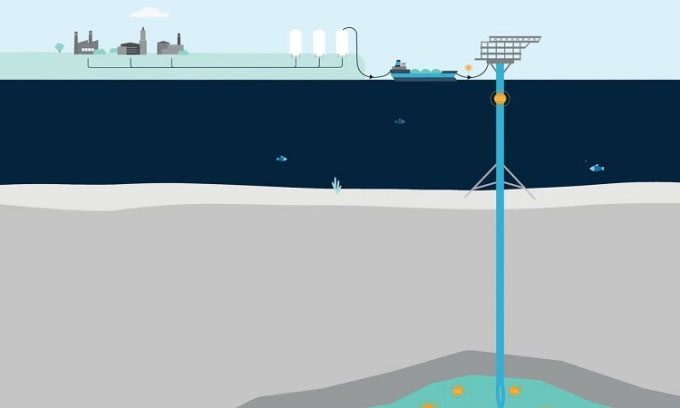On March 8, Denmark inaugurated a carbon dioxide (CO2) storage project at a depth of 1,800 meters beneath the North Sea, becoming the first country to bury CO2 imported from abroad.

The Greensand project will collect and liquefy industrial CO2 and pump it into old oil wells. (Photo: Semco Maritime)
Denmark will manage the CO2 storage beneath the North Sea as part of a new initiative called “Greensand”, led by the UK chemical giant Ineos and the German oil and gas company Wintershall Dea. This is part of a larger plan to prevent CO2 from being released into the atmosphere, halting the worst impacts of climate change.
The Greensand project is one of many carbon capture and storage (CCS) projects underway around the world. The project aims to store 8 million tons of CO2 annually by 2030 to help combat climate change. According to EuroNews, around 30 CCS projects are currently operational or in development across Europe.
What sets the Greensand project apart from similar initiatives is that Denmark imports CO2 from abroad, making it the first country to do so. Initially, CO2 is captured from its source, then liquefied before being transported by ship. However, the project may utilize pipelines in the future.
“This new project will help us achieve our climate goals, as our geological layer has the potential to store much more gas than we emit, allowing us to store CO2 from other countries,” said Climate Minister Lars Aagaard. Danish authorities aim to achieve net-zero carbon emissions by around 2045.
By storing millions of tons of CO2, the Greensand project will contribute to global efforts to combat the climate crisis. For instance, the European Environment Agency (EEA) reported that EU member states emitted 3.7 billion tons of greenhouse gases in 2020 alone. Scientists have also proposed various measures to prevent climate change, such as blocking sunlight from reaching Earth by sending lunar dust into orbit between the Sun and the Earth.


















































